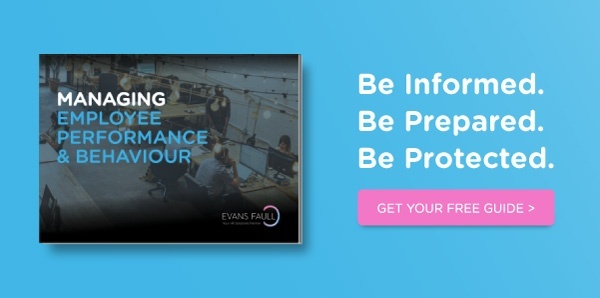One of the most counter-productive practices of corporate life is sitting down with employees once or twice a year to set their goals and review their performance. The annual or half-yearly performance review process is not motivating for employees and is dreaded by most managers, so why do so many businesses still have this model in place?
Even the fact that the word ‘review’ is still used is puzzling. While reviewing past performance is part of the process, there is so much more to driving employee performance than evaluating the previous six or twelve months.
This outdated approach to performance reviews does not align with the pace of business today. Effective employee performance management is an ongoing, future-focused process. Companies that maintain antiquated, paper-heavy, tick the box processes focused on events that occurred months in the past are at risk of getting left behind.
This article addresses two critical elements of a modern-day performance process:
- Ongoing feedback & development and future-focused conversations.
- How you can create a simple process that is much more meaningful for your employees and more aligned to your company’s strategic objectives.
Ongoing Performance and Development
Employees need to know how their contribution is impacting the business and where their development areas lie. It is well known that this is essential to ongoing job satisfaction and engagement for employees. However, if Managers only do this once or twice a year - they might as well not do it at all.
For performance and development feedback to be effective, it needs to be genuine and frequent – regular feedback needs to become part of the fabric of your culture. Managers today are required to become coaches, guiding their team members to make better decisions and overcome challenges, thereby enabling and empowering them to achieve their KPIs. This requires a regular investment of time to ensure that communication is frequent and open and that any bumps in the road can be addressed as early as possible.
Regularly discussing what employees are doing well and areas for further learning facilitates a culture of development and allows for skill gaps to be plugged more easily. This not only keeps high performers focused and motivated, but also enables organisations to be more agile and adaptable.
Focused Future Conversations
Gartner research shows that making performance conversations forward-looking instead of backwards-looking can improve employee performance by 13%. While past achievements certainly need to be acknowledged and recognised; it’s also vital that employees understand their future and the opportunities available to them. This is particularly so for high-performing employees – your most valuable assets.
Having goal-setting focused discussions with your employees regularly has numerous benefits. It provides employees with a sense of purpose, as they will understand how their role is connected to the vision and priorities of the business. Employees, (millennials particularly!) crave this clarity, purpose and sense of achievement. Setting objectives and assigning formal or informal learning to ensure that skill gaps are closed, and individuals are given a platform to succeed will keep them motivated and engaged.
The past is the past, and while it can be helpful to evaluate previous performance from a learning perspective, it should be a small percentage of the overall focus of the discussion.
Where To Start
Quite simply, the once per year performance review process was designed in the 70’s, and it doesn’t apply in today’s business environment. I don’t advocate getting rid of the performance review process altogether. However, there are a few things you can do to start moving towards a more modern approach:
Performance dialogue
If you are still talking about the performance review process as a once or twice per year activity, the first thing to do is to change the dialogue and start referring to performance management being an ongoing, continuous process. Incorporate discussions about feedback and development at every opportunity and ensure clear and regular communications around how roles contribute to the company’s strategic mission.
Leadership training
Whether or not your business will be successful in moving towards a feedback and performance culture will depend on the ability of your leaders to adopt a coaching mentality. Invest in leadership development for your leaders and build their confidence and capability to drive continuous performance and development discussions and to provide effective feedback.
KPIs for Leaders
To keep leaders accountable, incorporate key team performance metrics into Leaders KPIs including regular 1:1s with their team, regular goal setting, and reviewing and cascading business goals to teams and individuals at least twice per year.
Developing a culture of continuous coaching and development will ensure that your performance review process is much more effective, as the feedback will be more meaningful. It also removes the element of surprise that is so common with an annual/biannual process.
If you are addressing any capability gaps or development needs on an ongoing basis, you are ensuring that the business is equipped to succeed week-to-week and month-to-month, not just once per year. Not many businesses review their strategy and goals only once per year, not successful businesses anyway. So it doesn’t make sense that we would only review employee performance once or twice a year when the two are so inextricably linked.
The capability of your employees is what enables your business performance. Continually assessing both and ensuring any gaps are closed will see you in a much better position to achieve your businesses strategic goals.
If you want to implement the HR solutions outlined in this article, book a call with Amanda to explore how Evans Faull can protect and support your business.
Share this
You May Also Like
These Related Stories

How to Conduct Employee Performance Reviews in the New Era

What Really Motivates Your Employees To Perform?




No Comments Yet
Let us know what you think